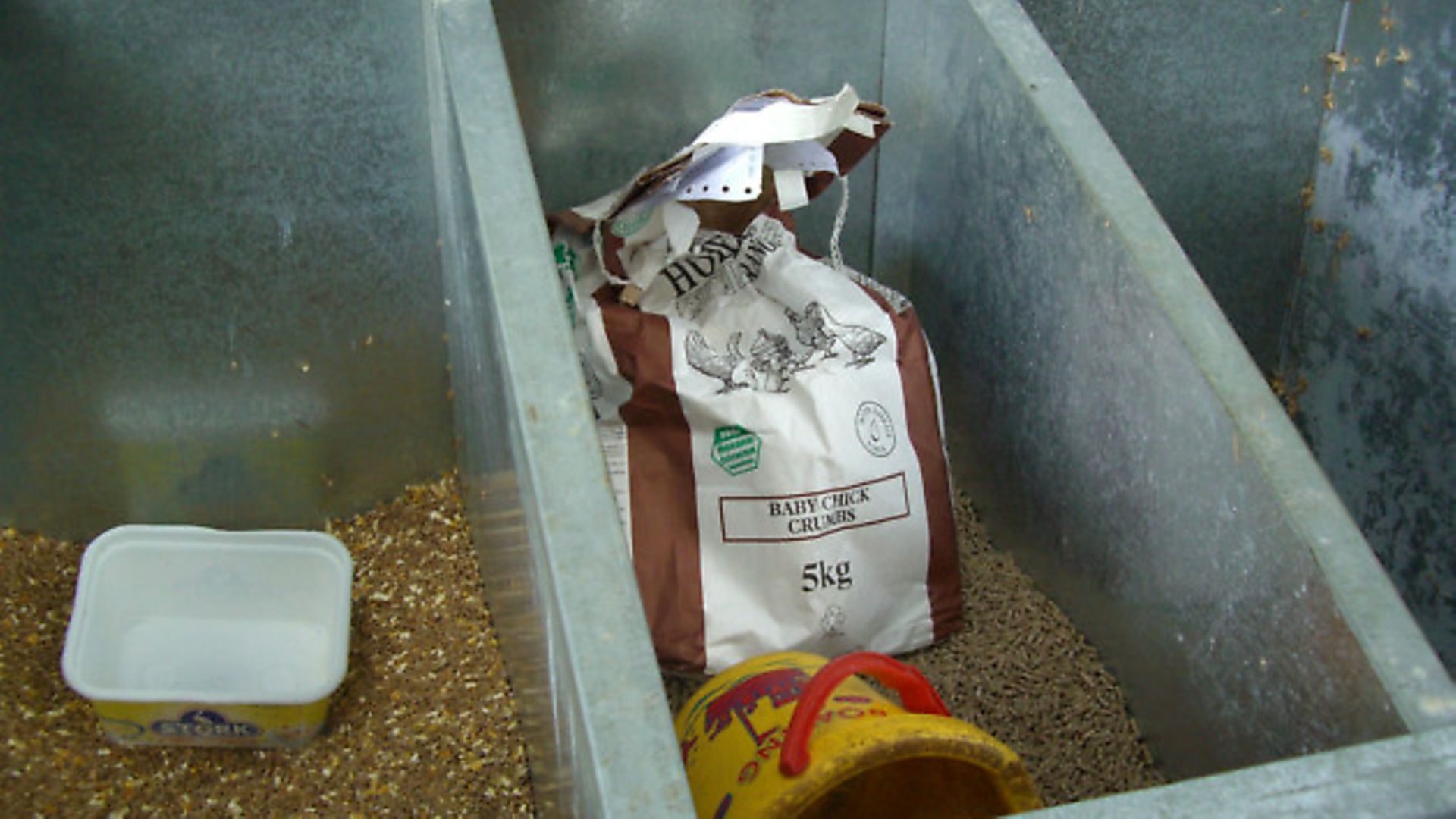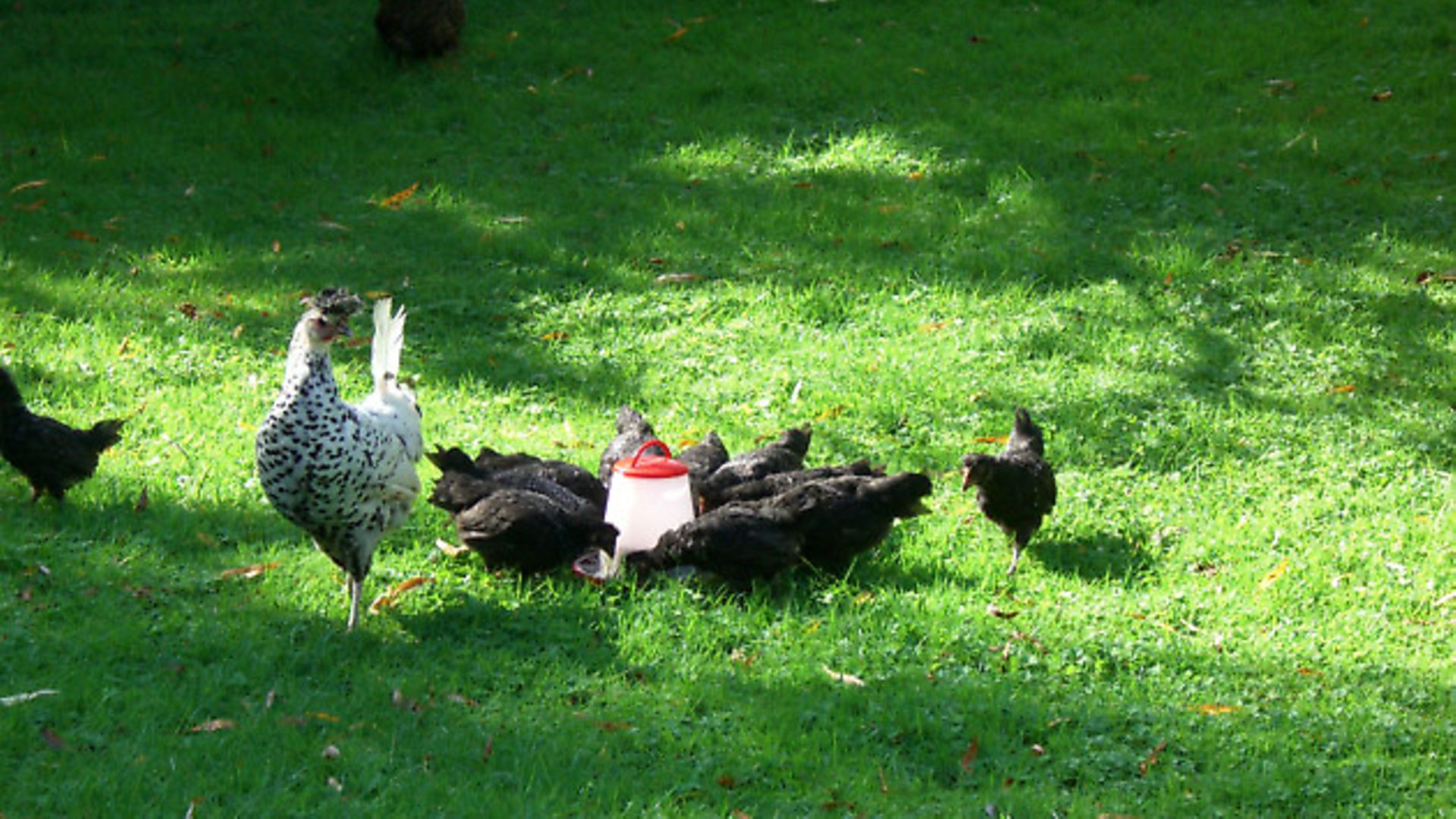Guidance from Anne Perdeaux, author of A Family Guide to Keeping Chickens

Feeding chickens has never been simpler. Complete feeds are available to provide a balanced diet whatever the requirements of your flock. Whether you are rearing chicks, feeding laying hens, or wanting to keep your breeding stock in tip-top condition, there is a feed dedicated to their needs.
Laying hens
There are two main types of layers’ feed: pellets or mash.
Layers’ pellets
Each little pellet delivers the same nutrients, so you can be sure every hen is getting the correct ration. Pellets also have the advantage of being clean and easy to use.
Layers’ mash/meal

This can be fed dry or moistened. Wet mash quickly sours, and leftovers must be cleared away. Chickens work harder to pick up dry mash, which can help alleviate boredom and stop sedentary birds becoming too fat. Mash can be messy though, and isn’t suitable for chickens with crests or muffs – it sticks to the head-feathers, which can lead to attacks from other birds.
Ex-battery hens will be used to feeds resembling dry mash, or you can buy crumbs especially formulated for them.
Breeding
Start feeding chicks while they are still a twinkle in the cockerel’s eye by supplying breeders’ pellets to prospective parents. This can help improve the quality of hatching eggs, and ultimately the chicks.
Chicks
Chick crumbs are sold non-medicated or with ACS. This means they contain a coccidiostat (to help prevent coccidiosis). Very young chicks can be vaccinated – in which case use non-medicated feed as the coccidiostat negates the vaccine.
Growers
At 6-8 weeks chicks can move to growers’ feed, again with or without a coccidiostat. Bear in mind that the medicated feed shouldn’t be given to laying hens, and there is also a withdrawal period before birds can be eaten.
Only change pullets to layers’ feed when they reach point-of-lay. Feeding them layers’ mix too early can start egg-production before their bodies are ready, and lead to developmental problems.
Meat birds
Chickens destined for the table can stay on growers’ feed, but a finishing feed helps them attain a good size and weight more quickly.
Grit
Chickens need insoluble (flint) grit to digest their food. Unless birds are completely free-range, you should supply a hopper of grit they can access as necessary. Small-sized grit is available for chicks.
Although feeds should contain sufficient calcium, you can provide soluble grit (usually oyster shell) if eggshells need improvement. Allow the hens to help themselves, and they’ll take what’s required.
Grain and extras
Grain and other treats should be given sparingly, and only in the afternoons so the birds eat their balanced rations first. Mixed corn is especially liked and is a warming food for winter nights. Wheat is a better option in summer.
Since the Foot-and-Mouth outbreak of 2001, it is illegal to feed chickens anything that has come via a domestic kitchen.
Green food
Chickens with no access to grass should regularly be offered some vegetables, ideally hung up for them to peck.
Water
A constant supply of clean water is essential.
Buying feed
Some feeds contain additives (medicinal, preservatives, yolk-enhancers) and some are organic, so read the information on the bags and check expiry dates. Stale feed can be harmful, so although larger bags are usually more economical, don’t buy more than you can use. Always store feed in dry, vermin-proof containers.
Image(s) provided by:
Archant
Archant







